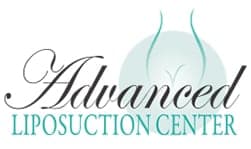Comparing CoolSculpting to Liposuction
Liposuction and CoolSculpting both seek to remove stubborn fat deposits yet work in entirely different ways. First and most importantly, CoolSculpting is completely non-invasive. No anesthesia of any kind is required, it carries almost no risks, and involves negligible recovery time. Liposuction, on the other hand, is an office bases surgical procedure. It’s subcutaneously invasive, and uses local anesthesia .

The main difference is the volume of fat each procedure can accommodate. Liposuction removes large amounts of fat, sometimes up to 7 -10 pounds. CoolSculpting, as the name implies, is primarily aimed at improving the body’s shape and contour. It does break down some fat, causing it to pass from the body, but the total volume is much less.
Are multiple CoolSculpting body contouring procedures needed?
After just one CoolSculpting body contouring procedure, most people will see a significant reduction in fat to the treated area. Generally, only one CoolSculpting treatment is needed to see undeniable, noticeable results. Results are typically seen within three weeks of the fat reduction treatment; most dramatic results occur over a period of two to four months. However, additional CoolSculpting treatments can be performed if additional fat reduction is desired.
Is there pain associated with CoolSculpting Treatments?
Most patients do not report any pain during a CoolSculpting treatment; however most patients do describe it to be slightly uncomfortable when the cooling process begins. At first, there is a sudden tugging sensation (not pain) as skin is being suctioned into the device. As the cooling process begins, the treatment area will feel intensely cold for first 10 minutes, followed by numbness for the remainder of the hour. When the device is removed, you may feel tenderness as the area “thaws” for 1-2 minutes. Once the procedure is over, you should not feel any pain as you resume normal activities. There may be some minor redness and possible bruising. Some patients feel tingling or twitching sensations for the first few days. Numbness may continue for several weeks as normal sensation gradually returns. In very rare occasions, some people may experience temporary nerve pain that dissipates in the weeks or months following treatment.
What Qualifies You as a Liposuction Candidate?
Every surgery has some prerequisites, and liposuction is no exception.
If you match the following conditions, you are an excellent candidate for liposuction:
• If you don’t have realistic expectations for your treatment, you could not obtain the results you want.
• You should be in good health; if you have circulatory issues, diabetes, or a weakened immune system, lipo should be avoided.
• Before beginning treatment, you must abstain from consuming alcohol and refrain from smoking, as both might lead to difficulties.
What Qualifies You as a Good CoolSculpting Candidate?
CoolSculpting, like liposuction, has some prerequisites. Here are a few of them:
• You should be in good health and free of ailments such as diabetes or cancer of any kind.
• You should have realistic surgical expectations.
• Your weight should be between 30 and 40 pounds.
• If you’re pregnant, you can’t have CoolSculpting.
Negative effects
These two surgeries, like any surgeries, have some side effects, which are detailed below.
Side effects of CoolSculpting
There are no surgical risks associated with CoolSculpting because it is a nonsurgical technique. The technique does, however, have certain adverse consequences to take into account.
Typical negative consequences could be:
- Tugging at the place of the procedure
- Stinging, aching, or soreness
- Temporary edema, sensitivity, redness, and bruising
Paradoxical adipose hyperplasia is a rare side effect that might occur. This is an uncommon disorder where treatment results in the expansion of fat cells rather than their elimination. It affects men more frequently than women and is typically curable with liposuction.
Effects of liposuction
Liposuction is a surgical procedure, making it riskier than CoolSculpting. Surgery frequently results in the following side effects:
- Uneven skin texture, such as lumps or divots
- Discolored skin
- Fluid buildup that may need to be drained
- Short-term or long-term numbness
- Skin disease
- Internal lacerations
Exceptional yet severe side effects could include:
- A medical emergency known as a fat embolism occurs when a fat clot enters the bloodstream, lungs, or brain.
- Issues with the kidneys or the heart brought on by the procedure’s alterations in body fluid levels.
- Anesthesia-related complications, if any are present.
Recovery
CoolSculpting often has a rapid recovery period. After surgery, it is feasible to resume everyday activities right away. In comparison, it may take a person up to a week following liposuction before they may resume their regular activities.
Doctors advise patients to do plenty of light exercise after liposuction to hasten recovery. This includes walking around or doing simple housework. It is best to avoid spending a lot of time sitting or lying down.
Additionally, doctors advise patients to wear body-constricting clothing for at least 4 weeks after liposuction. Anyone who is obese could require extra support for extra skin following surgery.
Which One Should I Choose, CoolSculpting or Liposuction?
If you want to lose weight, both solutions may be suitable, but some options will make it easier for you to select between them.
Liposuction is for people who want to lose weight from a wider region, whilst CoolSculpting is for people who want to lose weight from a smaller area.
If you are terrified of incisions, cutting, or stitching, CoolSculpting is the best option for you because it does not necessitate any of these procedures.
Liposuction recovery may take longer, however CoolSculpting does not require any downtime; you can resume your normal routine immediately after the procedure.
Liposuction is a one-time procedure, whereas CoolSculpting requires many sessions.
